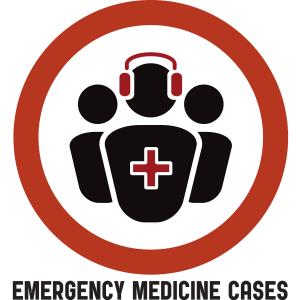Emergency Medicine Cases

Journal Jam 4 – Low Dose Ketamine Analgesia
(http://emergencymedicinecases.com/wp-content/uploads/2015/07/ketamine-300x196.jpg) You’d think ketamine was in the ED drinking water! Not only has this NMDA receptor antagonist been used effectively for procedural sedation and rapid sequence intubation, but also, for delayed sequence intubation to buy time for pre-oxygenation, for life-threatening asthma as it has bronchodilatory and anxiolytic effects, for severely agitated psychiatric patients and excited delirium syndrome to dissociate them and get them under control; ketamine has even been used for refractory status epilepticus and for head injured patients as it is thought to have neuroprotective effects. The big question is: How effective is low dose ketamine analgesia for patients with moderate to severe pain in the ED as an adjunct to opiods? Low dose ketamine seems not only to help control pain, but it also has this almost magical effect of making patients indifferent to the pain. Pain is everywhere. And oligoanalgesia occurs in up to 43% of patients in EDs. Can we relieve suffering with low dose ketamine analgesia in the ED?.... Expert Peer Review by Dr. Rory Spiegel @EMNerd_ July, 2015 In this episode of Journal Jam we review an article by Beauudoin et al published in Academic Emergency Medicine entitled Low-dose Ketamine Improves Pain Relief in Patients Receiving Intravenous Opioids for Acute Pain in the Emergency Department: Results of a Randomized Double-blind, Clinical Trial (1). Dr. Morgenstern’s interview with Dr. Beaudoin was insightful and Dr. Helman and Chan have done a fantastic job discussing the important results of this trial as well as reviewing the additional literature recently published addressing the use of ketamine for pain in the Emergency Department. The question most practicing clinicians want to know when reading a trial such as this is, does the intervention in question have clinically important effects on patients’ pain and discomfort? Clinical trials examining the efficacy of treatment modalities on subjective symptoms such as pain can at times be difficult to interpret. Typically authors use pain scales (traditionally an 11-point pain scale with 0 being no pain and 10 being the worst pain ever felt) and ask the patient to report their pain before and after the intervention of interest. But how do these changes in a pain scale translate into clinically relevant reductions in pain? Beaudoin et al used the summed pain intensity difference (SPID) at two hours as their primary outcome measure to assess ketamine adjunctive capabilities when compared to IV morphine alone. The SPID is essentially the pain relief communicated by the patients when questioned at a pre-specified time interval. (“My pain went from an 8 out of 10 to a 5 out of 10”, SPID=3). Each of these changes in pain is then added together to reach a summed total. The authors state that an absolute reduction in SPID of 2-points or greater or a relative reduction in 33% is the minimally important difference (MID), or the lowest reduction in pain scales that is clinically noticeable to the patient. These MIDs were derived and validated in a number of papers that correlated to changes in pain scales to patients’ need for rescue medication (2,3). These studies demonstrated that an absolute reduction in pain by 2 points on an 11-point scale, or a relative reduction of 33% most accurately predicted patients’ need for rescue medication. Even with this ideal cutoff, the accuracy was only 70%. Beaudoin et al reported both clinically and statistically significant improvements in pain in the two groups given adjunctive ketamine when compared to the IV morphine alone. The mean SPID was 4.0, 7.0 and 7.8 in the control, 0.15 mg/kg and 0.3 mg/kg groups respectively. The percent of patients in each group who reached an SPID of 33% was 25%, 50% and 70% respectively. Not surprisingly, given the poor predictive value of SPID,






 Visit Podcast Website
Visit Podcast Website RSS Podcast Feed
RSS Podcast Feed Subscribe
Subscribe
 Add to MyCast
Add to MyCast